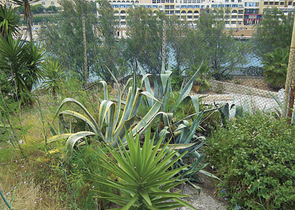Nature Conservation 5/2011 — 1. 3. 2012 — International Nature Conservation — Print article in pdf
Plesník J.: Invasive Alien Species: Some Like It Hot
Invazní nepůvodní druhy

Invasive alien species are key drivers of human-caused global environmental change. The past two decades have seen an explosion of research interest on human-mediated invasions. Nevertheless, a flurry of recent articles both in scientific journals and mass-media has called upon conservationists to embrace invasive species.
It should be stressed that there is an important distinction between alien species in general – which are introduced outside their natural ranges by humans, but which in many cases are harmless and even more, support natural processes in ecosystems as well as human well-being, and invasive alien species, which by the definition adopted by the Convention on Biological Diversity not only are introduced outside their range but also through introduction and/or spread outside their natural past or present distribution threatens biological diversity at all its main levels (genes/individuals, species, communities/ecosystems/landscape). In addition, some of the invasive alien species cause substantial harm to human health and economy. Thus, the endorsement of invading species – although potentially stimulating from an academic perspective – risks trivializing the global action that is needed to address one of the most severe and fatest growing threats to biological diversity: the data available demonstrate that biological invasions are growing at an unprecedented rate. Practitioners combating invasive alien species use a suite of strategies to prevent the arrival of invasives and to mitigate their impacts after arrival. Invasion biologists and managers have never argued that success can be defined only as elimination of every single non-native; rather, the goal is maintenance of a semblance of the original ecological assemblage/community, with all species playing their original roles. Drawing on ecology and economics to incorporate the impacts of invasive alien species on ecosystem services into decision making is key to restoring those life-supporting services that nature provides.

